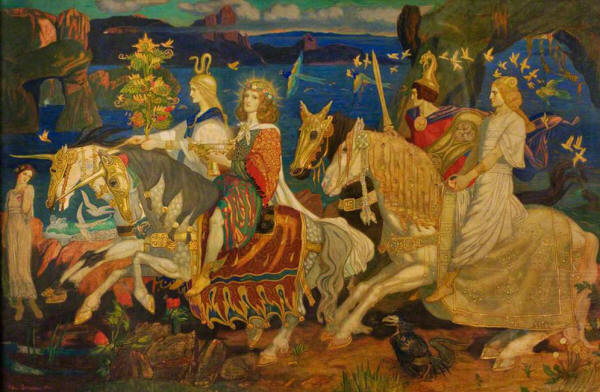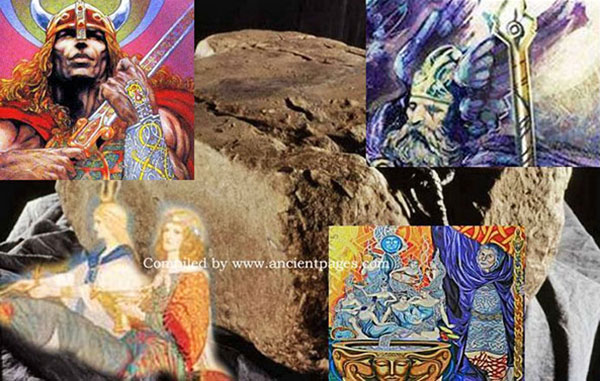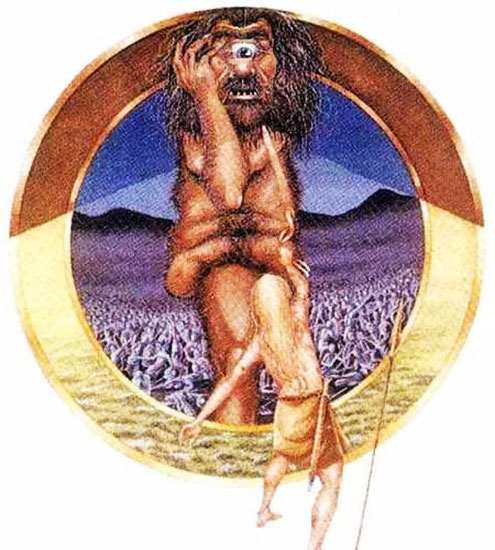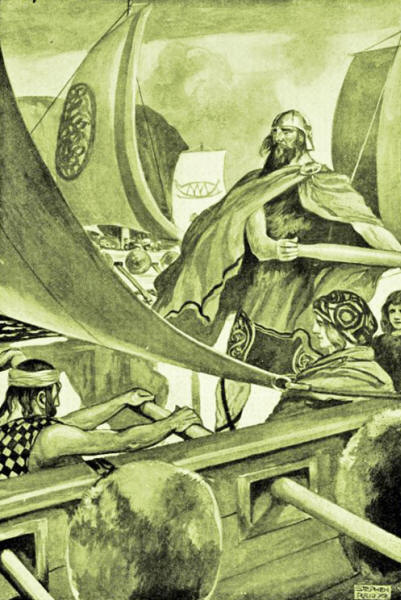|

by A. Sutherland
February 26,
2019
from
AncientPages Website
Spanish
version

The Tuatha Dé Danann
as
depicted in John Duncan's
"Riders
of the Sidhe" (1911)
Wikipedia
Thousands of years ago, a
god-like race known as
Tuatha De Danann (means "children
of Dana") came to Ireland.
Known also as the goddess
of the Danu tribe, they brought with them four magical treasures
that are mentioned in early Irish literature.
These treasures included,
-
Lia Fail - "The
Stone of Destiny"
-
the sword of Lugh
- "Invincible Spear"
-
the Sword of
Nuada - "Shining Sword"
-
the Cauldron of
the Dagda
Tuatha De Danann are said
to have come to Ireland from the north of Europe, where they had
spent many years learning arts and magic. They are represented as
large, strong, and beautiful beings that mingled with mortals and
yet remained superior to them.
They were believed to be a race of gods or demigods with
supernatural powers, human traits and personalities and a large
variety of skills in art, crafts, music, language, love and war.
There were also Druids
among this people.
Arrival of
Tuatha De Danann
The 'Annals
of the Four Masters' (also known as the 'Annals of the
Kingdom of Ireland') describe medieval Irish history, were compiled
by Franciscan monks.
The story of the Tuatha
De Danann, a mythical race of god-like beings with supernatural
abilities, is told in these chronicles. They came to Ireland in the
mists, or in a cloud, across the seas.
Myths and legends also confirm that a magical mist was produced by
their arrival and it was so thick that no one was able to see their
appearance.
Some other versions say
that they burned their ships to camouflage their arrival and thus,
hide from the inhabitants of this land.

Four Magical Treasures
of
Tuatha De Danann
Their principal residences were Brug na Boinne, a district along the
river Boyne near Stackallen Bridge in Leinster, one of the provinces
situated in the east of Ireland, and the fairy-mound (sidhe = shee)
of Femin in Tipperary, in southwestern part of the country.
The Tuatha De
Danann Produced Several Important Leaders
Each member of the Tuatha De Danann (Tuatha Dé Danann) has a special
significance, skill, or capacity.
Many of the tribe's most
famous characters and their qualities were mentioned in countless
tales set centuries apart, and these sources showed them to be
immortal.
Prominent members of the Tuatha included,
-
Dagda, a chief
god, associated with fertility, agriculture, manliness and
strength, as well as magic, druidry and wisdom
-
Morrígan, a
goddess of war and fate
-
Nuada, the first
king of the Tuatha De Danann
-
Angus (Aengus), a
god of youth, beauty and love
-
Brigid, a fiery
goddess of poetry who protects storytellers and bards
-
Creidne, a god of
metalworking who worked with brass and bronze and forged the
weapons, which the Tuatha De Danann used to battle
the Fomorians
Other prominent figures
of the tribe were also,
-
Boann (wife of
Dagda and mother of Angus), the Irish river goddess who gave
her name to the river
-
Dian Cecht, a god
of healing and medicine and his two children, Miach and
Airmid
-
Goibniu, a god of
metalsmithing
-
Manannán mac Lir,
a god of the sea
-
Lugh, god of
light, sun and crafts, and his father Cian
Other divine
personalities included,
-
Donn, god of the
dead and the Otherworld
-
Luchta, god of
craft who helped make magical weapons for the Tuatha De
Danann
-
Ogma, associated
with eloquence and language
Two Victorious
Battles of Tuatha De Danann
The tribe is associated with two great
battles of Mag Tuired. In the first
of them, they fought the
Fir Bolg for the ownership of
Ireland and the Tuatha de Danann won this battle.
The Fir Bolg people were
offered the Connacht province in Ireland and the two sides lived in
peace.

Giant Balor of The Evil Eye
Terrifying Fomorian King
and Grandfather of Celtic God Lugh
Credit: villains.wikia.com
In the Second Battle of Mag Tuired, they confronted their
traditional rivals, the Fomorians who were believed to represent the
destructive or harmful powers of nature.
In this military
encounter, the Tuatha were also victorious; however, it was a hard
battle.
The Fomorian king
Balor's poisonous eye, killed Nuada,
the first king of the Tuatha De Danann but Balor was killed himself
by his grandson, Lugh.
Balor struck down many Tuatha De Danann and he could conquer them
all, but first, he had to meet his grandson, Lugh, and confront his
skills with his deadly eye.
Despite being half-Fomorian,
Lugh fought on the side of the Tuatha De Danann and he played an
important role in the Fomorians' downfall.
Tuatha Dé
Danann and The Milesians
During many years, the Tuatha De Danann ruled Ireland in peace until
the invasion of
the Milesians, a tribe of people.
The "Book
of Invasions" says that the Milesians, the last mythical
invaders of Ireland and the true Gaelic people of Ireland, arrived
on Ireland's shores. The Tuatha De Danann tried to fight the
invaders; they even created a magical storm in an attempt to drive
them away.
The Milesian poet
Amergin, however, calmed the sea
with his invocation and then his people landed.

"The Coming of the Sons of Miled",
illustration by J. C. Leyendecker
in T. W. Rolleston's
Myths & Legends of the Celtic Race,
1911
The three queens of the Tuatha De Danann,
...gave their permission
for Amergin and his people to settle in Ireland.
Each of the sisters
required Amergin to name the island after each of them.
The Milesian chief decided to call the island after Eriu, and two
names of her two sisters, were occasionally used as poetic names for
Ireland. Then, the Milesians defeated the Tuatha De Danann.
Amergin assigned his own
people to live on the ground while the Tuatha De Danann were led
underground into the 'Sidhe' mounds by Manannán mac Lir.
The fairy people of Irish folklore, are said to live beneath the
hills and are often identified as the remnant of the ancient
fabulous race of Tuatha De Danann.
The Irish myths and legends say that 'Sidhe' is the abode of
immortals and fairy creatures.
Mag Mell, is one of such places
where the Tuatha De Danann are believed to live forever.
References
|





